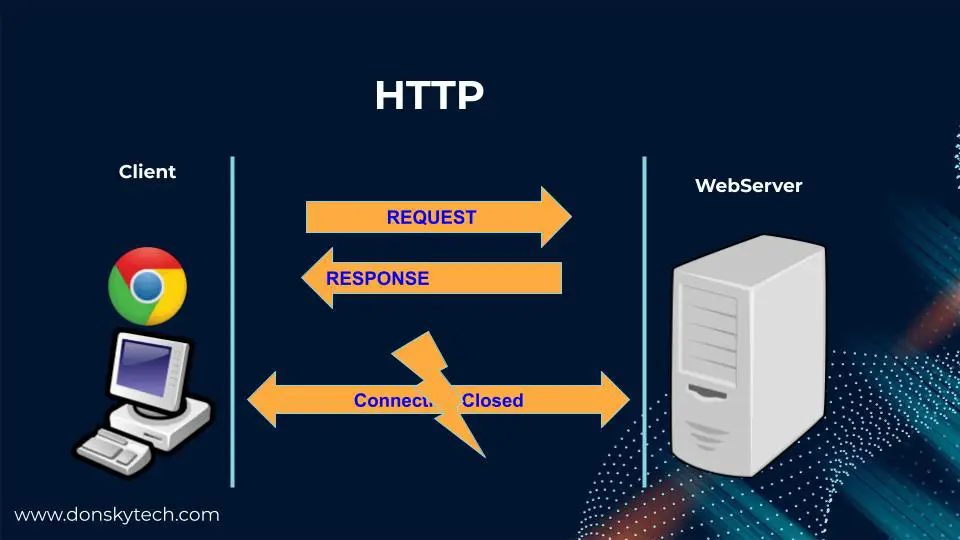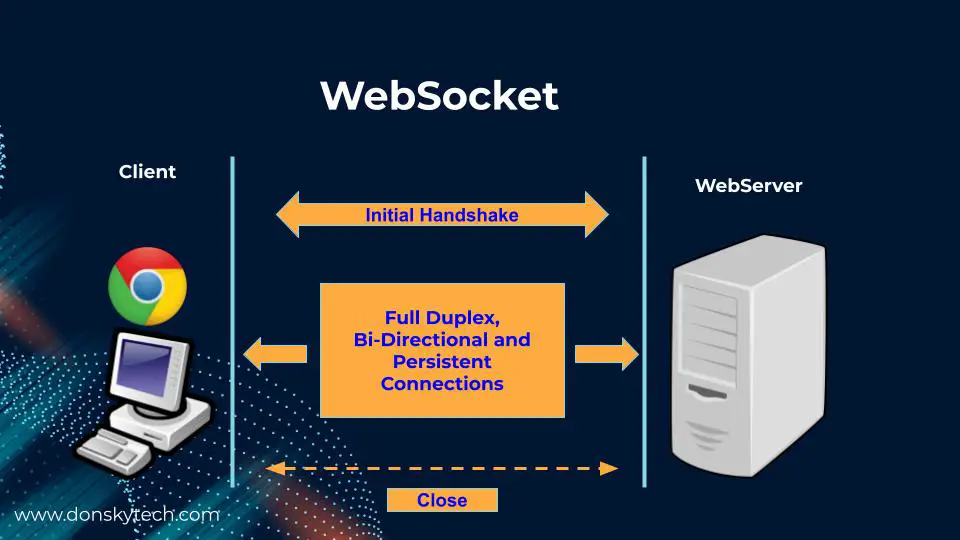Introduction
Have you heard about WebSocket and how to take advantage of its features in your Internet of Things (IOT) projects? In this post, I will try to answer some of the common questions about this useful protocol which is being used for real-time streaming of data between the clients and the WebServer.
What is WebSocket?
WebSocket is a client-server communication protocol running on top of your TCP (Transmission Control Protocol). It supports bi-directional full duplex message exchanges between a client (usually a web browser) and a web server with little overhead compared to HTTP. This makes it an ideal protocol for applications that requires “real-time” message exchange and asynchronous updates.
That is quite a handful of definitions. But let us try to break it down by explaining first by explaining how HTTP (Hypertext Transfer Protocol) works and comparing it to WebSocket.
HTTP Communication

- Client (usually browsers) request resources like pages, images, or files, and then the WebServer returns a response then communication is terminated. The opening and closing of connections add overhead for each request-response cycle.
- If the server contains new data then it does not push it to the client unless it requests it.
WebSocket Communication

- The protocol automatically upgrades to WebSocket when the Initial HTTP Handshake (Upgrade) is successful. Please see the next section on how this upgrade works.
- The client can send messages to WebServer. The WebServer can push messages to the Client. Both can send and receive messages at the same time. In effect, this protocol is full-duplex and bi-directional.
- Connection is persistent so it does not get created/destroyed for each request/response cycle. This makes it ideal for “Real-Time” applications as there is less overhead. If one of the participants disconnects then it closes the connection and does not get reconnected.
How is a WebSocket connection established?
The process of establishing a WebSocket connection is done thru the protocol handshake using a pair of WebSocket Handshake Request and a WebSocket Handshake Response.
Below is an example of a WebSocket Handshake Request
GET ws://192.168.100.195/ws HTTP/1.1
Host: 192.168.100.195
Connection: Upgrade
Pragma: no-cache
Cache-Control: no-cache
User-Agent: Mozilla/5.0 (Linux; Android 6.0; Nexus 5 Build/MRA58N) AppleWebKit/537.36 (KHTML, like Gecko) Chrome/105.0.0.0 Mobile Safari/537.36
Upgrade: websocket
Origin: http://192.168.100.195
Sec-WebSocket-Version: 13
Accept-Encoding: gzip, deflate
Accept-Language: en-US,en;q=0.9
Sec-WebSocket-Key: tnl0nQWIsWwEMpj9V+dV3A==
Sec-WebSocket-Extensions: permessage-deflate; client_max_window_bitsThe sample WebSocket Handshake Response.
HTTP/1.1 101 Switching Protocols
Connection: Upgrade
Upgrade: websocket
Sec-WebSocket-Accept: n62Htl716IZqfTO319eJ6Ig1PMI=
Accept-Ranges: noneYou would see this WebSocket Protocol Handshake request/response when you open your developer tool and go to the network tab of your browsers. You would see that the status will become 101 Switching Protocols when the HTTP connection is upgraded to a WebSocket connection.

Notice the scheme in the “GET ws://192.168.100.195/ws HTTP/1.1” header which uses the ws(WebSocket) or wss(WebSocket Secure). This is similar to how HTTP and HTTPS are structured with wss as the most secure between the two.
Once the initial handshake is completed and the connection is upgraded to a WebSocket connection then the message exchange between the client and the server can start. This connection remains and is persistent until one of them disconnects.
Sending WebSocket messages
Sending messages to the WebSocket server is as easy as calling socket.send("message") in your Javascript code. The code below is how you can handle the connections with your WebSocket server.
// Creates socket connection to our server
const socket = new WebSocket('ws://localhost:5000/ws');
// Callback function when connection is open
socket.onopen = function () {
socket.send("donsky");
};
// Callback function when connection is received from websocket server
socket.onmessage = function(event) {
console.log(event.data);
};
// Callback function when connection is closed
socket.onclose = function(event) {
console.log("Connection is closing...");
};
// Callback function when connection encounters an error
socket.onerror = function(event) {
onSocketError(event);
};Why WebSocket is good for IOT projects?
WebSocket is an excellent mode of communication for displaying real-time data that you want to send from your Server to your clients. Example applications include Chat apps, Stock prices, and Gaming programs that display information to your user and need to be updated asynchronously in real-time.
WebSocket is very much applicable to IOT-based projects since we are dealing with sensors or actuators that we need to respond to immediately. Since most project nowadays requires control from Web Browsers then this is an ideal protocol to use. Most browsers support the WebSocket protocol.
I have used this communication protocol in many projects that I have done like:
- ESP32 Robot Car Using Websockets
- ESP32 Home Automation Project
- Raspberry Pi Object Counting using Infrared sensor
A typical example is when you are controlling your WIFI robot car using your mobile phone. The web application you are using to control your robot car should respond immediately otherwise your robot car may crash.
Take a look at the video below of my ESP32 WIFI robot car that uses WebSocket to control its movement. Once I clicked the control to turn left then my car should automatically turn left and turn right if I clicked the right control. If I had used HTTP here, then my car might not be as responsive as it can be because of the overhead that I have discussed above.
WebSocket versus other IOT protocol
MQTT versus REST
MQTT (MQ transport Telemetry) is based on the publish-subscribe model and is aimed at devices with limited network bandwidth. This protocol was established with the goal of machine-to-machine communication in mind.
| WebSocket | MQTT |
|---|---|
| Bi-directional and full duplex | uses the publish/subscribe model |
| does not have topic and priority concepts | it has the concept of topic and priority |
| incurs latency when there are multiple devices connected | minimal overhead when using multiple IOT devices |
| Sending and receiving of messages is from server to clients | multiple publishers and subscribers can participate in the communication |
Both these two protocols serve different purposes and are usually complementary technologies to each other.
REST versus WebSocket
REST (Representational State Transfer) is an architectural style commonly used when serving web service API.
| WebSocket | REST |
|---|---|
| Stateful protocol | Stateless |
| Bi-directional and is a full duplex | Uni-directional and based on the request-response model. |
| Uses IP and Port assignment to communicate between client and server | Uses HTTP Methods (GET, POST, PUT, DELETE) and has the concept of resources |
| Faster as connections are persistent so one TCP Connection is used. | Slower as every request/response cycle uses a new TCP connection with additional headers per request |
The REST is used for serving an API web service request to clients and serves a different purpose than WebSocket. They are both useful in the use cases that they are trying to solve and WebSocket does not replace the HTTP REST interface.
Wrap up
We have discussed the basics of WebSocket in this post and explained why it is an ideal communication protocol in our Internet of Things (IOT) projects.
Happy Exploring!
Leave a Reply